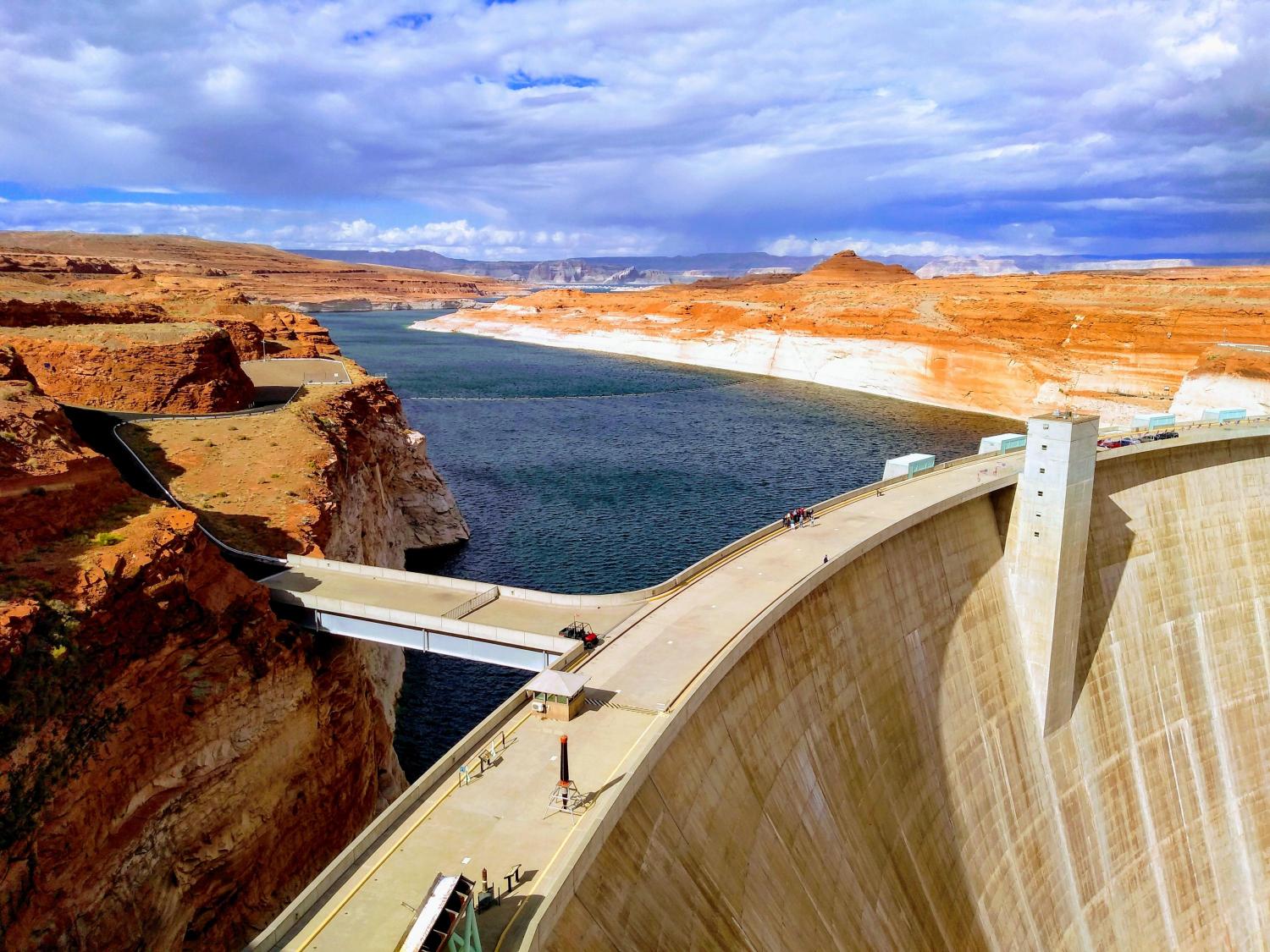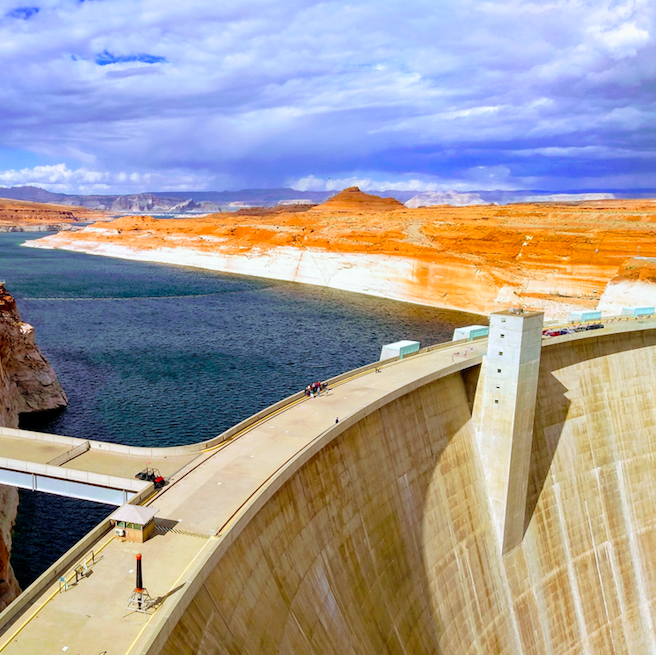Would a Meat Tax Push Food Companies to Adapt?


Would a meat tax nudge more citizens to change their diets, nudge more companies to expand into plant-based alternatives or ramp up animal welfare programs? In Europe's largest economy, the discussion is well underway.
Germany has given us a bevy of meat dishes, from the bratwurst to wiener schnitzel, the latter of which is on menus worldwide from Bavaria to Bangkok. But according to several news sources, including the country’s Deutsche Welle news service, some politicians are suggesting that citizens give up more at the checkout counter in the form of a meat tax in order to fund animal welfare programs in the country.
Growing criticism of how animals are treated at factory farms have sparked this discuss. Legislators who belong both to the Social Democratic and Green Party suggest that meat be taxed like most non-food products, at a rate of 19 percent. The current rate for food is a value-added tax of 7 percent. Taxing meat, say supporters of this policy, would help boost animal welfare programs across the country.
The global meat industry has long said it is doing what it can to make the sector more responsible and sustainable, but many policy makers aren’t having it. Some countries are already enacting policies in the drive to moderate their citizens’ meat intake. A few years ago, the Netherlands recommended that people adopt more of a plant-based diet, while reducing their weekly meat consumption to less than 500 grams (17.5 ounces).
On this side of the pond, the very idea of taxing meat would be about as popular as a universal basic income or government-run health insurance. Just look at the politics: Mississippi has banned the use of terms such as “veggie burgers” in retail outlets, even threatening jail time for offenders. Other states are considering similar measures.
But finding ways to either tax meat, or discourage its consumption, may not be impossible. A 2015 Chatham House study conducted surveys and held focus groups in a dozen nations and found such measures could work if they were framed as beneficial to the public interest – as in the anti-smoking campaigns of yesteryear.
Agriculture and food interests in the United States would fight such an initiative tooth and nail, but as we’ve seen time and again, the political climate can change on a dime. And the reality is that many of the world’s largest meat companies are already tweaking their business models.
For example, Brazil’s JBS, the world’s largest meat company, introduced a plant-based patty this spring. Nestlé will soon roll out its version of a plant-based burger in the United States and Europe. Smithfield Foods has kicked off a line of soy-based meatless products, which could be available in 5,000 stores by February 2020. And Tyson Foods recently announced its own alternative meat product.
Such chess moves are smart for a bevy of reasons that go beyond climate action and public health. After all, it’s better to anticipate these shifts, self-regulate and wield the ax on your own terms, rather than have legislators do it for you.
Image credit: Laura Anderson/Unsplash
Integrating Water Conservation into Business Strategy


One quarter of the world’s population is running out of water. An alarming new study shows that U.S. states including Arizona, California, Colorado and New Mexico are tapping so much of their available water each year that small changes in water use—or weather—could lead to dramatic shortages for homes, business, agriculture and other vital needs. At a first glance, trying to accelerate water conservation strategies appears to be too steep of a climb.
But for those of us facing this challenge here in the United States, there is some heartening news – businesses are stepping up and playing a vital role in developing water initiatives that can ease the stresses on crucial watersheds. These projects and programs can pay dividends for natural systems, communities and farms, and businesses’ bottom line.
Water conservation is a winning strategy for business
A new article commissioned by our Business for Water Stewardship program, “From Corporate Water Risk to Value Creation,” highlights how a company that integrates water sustainability into its long-term business model can see both business benefits and risk mitigation over time.
In the not-so-distant past, a business might have relied on its corporate social responsibility staff to manage sustainability projects. This work was often considered adjunct to the company’s core strategic goals and bottom line. But increasingly many companies are recognizing that an integrated and all-encompassing approach to water will have a far deeper impact that can generate social, business, and environmental value.
Be smart, and go deep when looking at water
The key is weaving water-smart policies into the way they do business and expanding them across their day-to-day operations. It’s also about having the courage to confront the root causes of water scarcity. Anheuser-Busch InBev – the largest brewing company in the world – has become a leader in new approaches to managing demand for water. Last year, it launched its 100+ Accelerator class by providing the necessary resources, tools and contacts to promising entrepreneurs. The project included three water technology startups involved in creating clean water from air, measuring water quality in real time through mobile devices, and waste water treatment, respectively, to help solve some of the water challenges we face.
Many other examples exist of corporations recognizing the value of this approach where conservation, policy leadership, and off-site water strategies are integrated to deliver business value. For example, in 2019, in the face of 18 years of drought, the Arizona Chamber of Commerce and Industry and a long list of companies including Cox Communications, Intel, Danone North America and Arizona Public Service advocated in favor of progressive drought planning legislation for the lower Colorado River. Many of these companies have also recently made commitments to both conserve water internally and to support external programs designed to help deliver a secure water supply -- which will benefit not only the businesses but also local communities.
In light of the sobering news about water stresses around the world, there’s an opportunity for more businesses, large and small, to promote and invest in water-smart policies and programs across the U.S. The business sector can be a transformative leader in ensuring our communities have plentiful clean water for generations to come. The possibilities are endless. And the time is now.
Image credit: David Lusvardi/Unsplash
Another European Heat Wave: Carbon Credits


You may not have noticed by glancing at all those doctored-up photos of your friends boasting about their transatlantic travels on Instagram, but it’s been a brutal summer in Europe. This year's relentless European heat wave resulted in record-setting temperatures across much of the continent.
In addition to the human toll and amplified calls for taking action on climate change, the surge in temperatures has caused one market in particular to heat up: Europe’s carbon credit market.
Carbon credits date back to the 1997 Kyoto Protocols, when signatories of that agreement envisioned a market buzzing with activity led by energy companies, power plants and heavy manufacturing companies like automakers. Think of the system as a version of musical chairs: Regulators limit how many carbon-emitting permits can be issued at a time, and companies buy, sell and use them. A similar system green-lighted by U.S. President George H. W. Bush in the early 1990s helped curb “acid rain,” which was rampant due to sulfur emissions across much of the northeastern United States and Great Lakes region.
Europe’s carbon market kicked off in 2005, but soon sputtered. The global financial crisis was one huge factor, along with the fact that some industries were grandfathered and therefore exempt from the system. Other companies harnessed other climate-friendly tactics, such as investing in renewables.
But earlier this decade, emissions across the European Union began to spike, spooking policy makers. The EU started to reduce the total number of carbon credits. Add this summer’s scorching heat, and you have a perfect storm. According to the Wall Street Journal, the price of these credits has increased 400 percent during the past two years.
And despite the other European heat wave -- bubbling populist movements across much of the continent -- the Financial Times has noted that many EU leaders feel “bullish” about environmental policy. Hedge fund managers also are noticing the activity and are joining the fray, which further helps to boost prices.
Other segments of the carbon market are enjoying a spike of activity as well. According to Bloomberg, the “flight shame” movement led by activists such as Greta Thunberg has sparked a surge of carbon offset purchases as more Europeans seek to mitigate their environmental footprint while traveling by air. Even penny-pinching Ryanair passengers are on the bandwagon, with the airline reporting that the number of customers who have purchased offsets has doubled during the past 18 months. The ongoing backlash against flying even nudged the Dutch national carrier KLM to suggest that passengers book train tickets instead of braving the skies in some circumstances.
Not everyone is a fan of this trend.
“Small companies have been weeded out, highly regulated global carbon and renewable energy markets have been set up, and thousands of participating companies and charities are now theoretically held to international standards by independent verifiers,” Guardian environmental writer John Vidal recently wrote. “As the climate emergency grows, so too does the money involved – and the need for accountability.”
As for any carbon pricing plan, including emission credits, Scientific American’s Scott Tinker concluded that the only way such programs can succeed is if they scale up and become global. “If actions taken to reduce atmospheric emissions in one region result in increased emissions elsewhere, then the one atmosphere suffers,” Tinker wrote last week.
Image credit: European Space Agency
As Beef Gets Booted Out of College Campuses, Meat Companies Take Note


Across the pond in the United Kingdom, Goldsmiths, which is part of the University of London system, made news with its announcement that beef products will no longer be sold beginning this academic year. The decision is part of the college’s climate action plan, which includes imposing fees on plastic cups and plastic water bottles, as well as investments in renewables. Goldsmiths has a message to investors and energy companies as well: The college’s endowment fund will divest from any company that generates more than 10 percent of its revenues from fossil fuels, the Guardian reports.
This news coming out of London does not necessarily mean we'll see a rapid domino effect of more colleges and universities nixing meat companies from their list of approved suppliers. Such a move could be a tough sell in other corners of the globe—after all, at least one U.S. state has banned the use of terms of such as “veggie burgers” in retail outlets, even threatening jail time for offenders. Higher-ups within meat industry trade organizations may feel smug for now, but while they won that battle, they are risking losing the plant-based versus animal-based war in the long run.
The stubborn reality is that the likes of Goldsmiths and WeWork will not be outliers for long. The fact is, if we see more bans like this take hold—even if it's only in states and cities like the usual suspects including California, Massachusetts, Austin and Seattle—the message will be clear: Transform your business models if you want to do business with us. If you want to score those lucrative supplier contracts, adapt or lose out.
Companies are already getting the message. Nestlé, for example, will soon roll out its version of a plant-based burger in the U.S. and Europe. Smithfield Foods has launched a line of soy-based meatless products, which could be available in 5,000 stores by February 2020. Tyson Foods was once an investor in Beyond Meat, only to terminate that relationship. But not to be outdone, the Arkansas-based food giant recently released its own alternative meat product.
It’s an exciting time to be a foodtech startup. New products keep rolling out, and this era is reminiscent of the dot-com years of the early 1990s: New startups emerging on the scene, with many of them hoping (but not admitting) to get gobbled up by a larger company that has the cash, resources and talent to bring them to market.
The outlook for this sector is not all rosy. There is still the challenge of addressing overfishing with plant- and legume-based alternatives to fish. And the “beef is bad for the environment” argument is a nuanced one. As TriplePundit’s financial writer Amy Brown has pointed out, there are plenty of cattle operations that actually double as carbon sinks, and the argument that plant-based burgers are healthier for you is not necessarily the case. Finally, as all of the chatter on financial news channels and websites keep reminding us with Beyond Meat’s IPO, there could always be a crash, akin to how the dot-com sector finally took a nosedive in the early 2000s.
The companies that can successfully market to the Goldsmiths of the world, however, will still be standing.
Image credit: Camila Melim/Unsplash
Tokyo Olympics Striving to Connect Environment and Economy


The 1964 Tokyo Olympics heralded a new life, a phoenix rising from the ashes of World War II. Japan was eager to show the world its resilience, and the games were part of a boom that has created one of the strongest economies in the world.
But the economic surge that launched itself in the aftermath of the 1964 games took a toll on the country’s water, effects still felt today. The construction for the games covered rivers, canals and bits of sea, restricting or destroying much of the city’s navigable waterways, and drying up a prized seaweed field that had been harvested for 300 years. Sludge, algae and toxic water resulted.
Now, 2020 will see another Tokyo Olympics, and the organizers of next year’s games have already launched several sustainability initiatives. Japan is a different country than it was 55 years ago, but signs exist that poor water quality may again raise its ugly head. Compounding the environmental toll that every Olympic Games puts on the host country is the fact that climate change makes these calculations more exacting.
Summers in Japan are already prone to extreme heat. Late July is typically hot and humid, with average temperatures hovering around 90 degrees Fahrenheit. In fact, even in 1964, organizers pushed the Tokyo games back to October for this reason (next year’s games start in late July).
Higher temperatures mean more stress on both water quality and quantity. Water quality is already causing some heartburn for organizers. In October 2017, E. coli levels at the spring canoe and rowing venue was 20 times the acceptable limit set by Olympic guidelines. Organizers subsequently added underwater screens, which have significantly reduced the bacteria levels, but other venues are still struggling to meet requirements.
In addition, Odaiba Seaside Park, the venue for swimming and the triathlon, failed a water quality test in October 2018. These problems have solutions, but they significantly increase costs, which typically strain budgets under the best of circumstances. The International Olympic Committee’s vice president, John Coates, urged the Japanese organizers to reduce costs by over $1 billion—the costs having almost doubled from the initial proposal.

(Image: New National Stadium, site of the Tokyo Olympics opening and closing ceremonies, as well as track and field competitions.)
In 2016, Rio de Janeiro faced a bevy of problems, including several water-related obstacles when it hosted the Summer Olympics. One of the venues for sailing and windsurfing, Guanabara Bay, was so polluted that some countries debated whether they should even allow their athletes near the body of water. In the end, the events took place with athletes taking precautions, such as hepatitis vaccinations and antimicrobial suits.
Japan is in a different boat economically from Brazil, and there should be no excuses about water quality. Water quantity provides another obstacle. Prior to the 1964 games, Japan suffered an “Olympic drought” and had to source emergency water supplies. No such drought threatens next year’s games, but fear of drought raised its head earlier this summer when rains were late to arrive. The bigger threat for Japan under climate change, however, is an excess of water. Predictions of increased catastrophic floods linger over the country.
Water is just one component of environmental impact to consider. Olympic Games had historically been about gold, silver and bronze—not green. Even the “greenest” Olympics, held in London in 2012, used almost 400 temporary generators, which had their own emissions impact during the Games. With the advance of climate change, the impacts of the games on host countries could become more pronounced. At times, renewed calls come for permanent games sites, which could reduce both the overall costs and the environmental stress that comes from construction of facilities. In addition to the monetary costs of putting on games, the environmental costs can be even more staggering.
The reality is, when the environment is separated from economics and public health, hidden costs mount quickly. Connecting the dots is necessary. Environmental costs could be incorporated into projected costs during the bidding process. We must create a future in which countries are able to undertake ambitious projects like the Olympics and still protect their people, natural resources, and fiscal health. Gold medals may not be at stake, but a prosperous future is.
The sustainability concept for the Tokyo 2020 Games is: “Be better, together—for the planet and the people.” If next year’s Olympics truly live up to that ideal, we could see a future where future host cities are better off, with not only an enhanced global reputation, but also better infrastructure including facilities that citizens can enjoy for the long term.
Image credits: Jezael Melgoza/Unsplash; Tokyo-Good/Wiki Commons
Clothing and Shoe Subscriptions, the Sustainable Answer to Amazon


A popular brand launches shoe subscriptions for kids, and offers apparel and footwear companies ideas on how to swat away competition from Amazon.
Nike generated plenty of headlines earlier this week when it announced a shoe subscriptions for kids. For any parent who views this back-to-school time of the year with angst, or for any former kid who remembers the ordeal of going from store to store at the mall, Nike’s new venture will arouse plenty of reactions, from “oh thank goodness” to “where was this when I was young?”
The service works like this: Parents settle on one of three plans; kids can then select from various Nike- and Converse-branded shoes; the shoes arrive in a personalized box; and when the kid outgrows the shoe, gets tired of it, wears it out, or if he or she just doesn’t like it, the shoes can be seamlessly dropped off in the mail.
For those of us focused on sustainability, these shoe subscriptions’ most compelling selling point is that, depending on the condition of the returned shoes, they will be refurbished and sent to a family in need. If they are beyond repair, Nike has pledged to recycle them through its Grind program.
Of course, there is no shortage of clothing and shoe subscriptions for all ages, but Nike’s stands out for its reuse, refurbish and recycle angle. Watch for other companies to respond in kind, as there are plenty of people in need, as well as customers who want to consume less and reuse more. The possibilities are endless, and in any event, the pressure is on for retailers and apparel companies to become more responsible and ecological—those who do not fall in line will struggle in the near future.
There is another reason why brands may want to emulate Nike: the Amazon factor.
The impact Amazon has long had on retailers is an open book—and many, from Kohl’s to Macy’s, are responding or suffering in kind.
But another argument the likes of Nike can make as they try to push subscriptions while competing with Amazon is one that centers on sustainability.
While Amazon has claimed that it will be better about donating products returned to its warehouses, many critics have alleged that far too many goods in perfectly fine shape end up in landfills.
The hilarious and disturbing case of the 22-year-old who was arrested in Barcelona earlier this month after scamming Amazon out of $370,000 by returning boxes of dirt is a case in point. If it took Amazon’s employees a few fortnights to figure out those returns were not unwanted dumbbells, Brita filters or Martha Stewart linens, well . . . logic only dictates that plenty of Amazon packages have ended up in some sort of warehouse or landfill purgatory.
Some may say, “Well, what about the emissions from all those boxes being sent back and forth?” The answer is, read the story about James Gilbert Kwarteng and be reminded that online shoppers and subscribers—and the brands shipping and receiving these boxes—can do far better.
Image credit: Shane Rounce/Unsplash
Is Plant-Based Fish the New Vegan Burger?


As much as 55 percent of our oceans are fished industrially, which is equivalent to four times the total land mass used for agriculture. Meanwhile, warmer waters due to climate change are causing sharp declines in fishery populations, National Geographic reports.
These facts, coupled with recent findings that climate change and overfishing could increase the mercury levels in fish, make for a guilt-ridden pescatarian experience. These bleak environmental factors pose stark economic implications because the global fishing industry accounted for $362 billion of economic output as of 2016, according to a State of World Fisheries report.
The poor state of industrial fishing, our oceans, and the associated health risks together are sobering. Plus, deciphering whether to eat wild-caught fish versus farmed fish adds another level of complexity as this dilemma brings up questions around ecosystem impact, carbon footprints and plastics.
The silver lining, however, is that more companies are seeking less extractive solutions that rely on a different supply chain to bring a whole new kind of fish—made from plant-based ingredients—to the earth’s growing population.
The latest in food tech: Plant-based fish
Companies working to create the ultimate plant-based fish include New Wave Foods, a plant-based shrimp company; Good Catch Foods, a company that produces a plant-based tuna; and, of course, Impossible Foods, the company known for its vegan bloody burger.
Impossible Foods in particular is on a rapid growth trajectory; note its recent announcement that the company will expand its production. This is a timely decision as during 2018, the nascent plant based food category is projected to grow at a rate of almost 25 percent over the next several years. And the company hopes to have enough plant-based options to make animal protein unnecessary by 2035.
Currently, Good Catch Foods’ products are available in some New York City Whole Foods locations. New Wave Foods’ shrimp are available at select restaurants in San Francisco and New York City. Impossible Foods has yet to release a plant-based fish option.
If the plant-based fish segment is to grow as quickly and with the level of impact that the plant-based meat sector has, plant-based fish companies need to win the hearts of non-environmentalists and non-vegans, i.e., everyday consumers.
Mastering taste and texture key to acceptance of plant-based fish alternatives
Companies focused on developing plant-based fish alternatives realize they have to research and innovate quickly if they are to offer products that can sway consumers with flavor and texture.
“The only way we can succeed,” Impossible Foods CEO Pat Brown told The New York Times, “is to make fish from plants that is more delicious than the fish that’s strip-mined from the ocean.”
Impossible Foods is ramping up research and even recently announced that it created a plant-based broth with a similar taste to one made from anchovies, Food & Wine reported. Plus, the FDA’s approval of the Impossible Burger’s “plant blood” is an exciting step for the company if it can get closer to achieving a plant-based fish formula that has the mouthfeel of a fish. The trick is heme, the molecule that creates a taste and texture that makes our brain experience the animalistic aspect of the meatless burger, and hopefully soon, fishless fish.
Texture and flavor have been important to Good Catch as well. It spent two years launching its canned tuna product line, according to VegWorld Magazine. The company’s plant-based tuna is comprised of algae, beans and legumes to achieve a fish texture similar to canned tuna.
“In terms of texture, that was probably the biggest feat. Diversifying the proteins enabled us to create the texture with six different beans,” Chad Sarno, the co-founder of Good Catch, told Marketwatch.
Communicating the benefits present challenges in growing the plant-based fish market
Consumers see fish as a healthy source of Omega 3s, vitamin D and minerals. Hence their motivation to switch from fish to a plant-based alternative for health reasons isn’t as obvious as switching from cattle-based beef to plant-based burgers.
“A lot of people will simply say if you eat meat, you’re increasing your risk of cancer,” Tom Rees, who studies the packaged food industry for the market research firm Euromonitor International, told The New York Times. “There isn’t an equivalent of that for fish.”
Even though fish is known as a healthy animal protein and there is a debate about the functional benefits of plant-based Omega 3s versus Omega 3s from fish, plant-based fish companies do have valid functional benefits to tout. They include foods rich in protein, as well as the absence of mercury and other toxins which in the end, are an improvement for everyday health.
Interest in a plant-based lifestyle bodes well for plant-based fish
The nascent plant-based fish segment, which currently makes up less than one percent of the total plant-based meat market, is poised for growth. Sales of plant-based food are expected to surpass $13 trillion by 2025. Plus, millennials with children are more likely to adopt plant-based diets, which could lead to a new generation that is more mindful and willing to adopt a plant-based lifestyle, Forbes reports.
Investors’ interest in plant-based fish companies also signals a new tide in plant-based fish’s status. Good Catch secured $8.7 million in 2018, while Chipotle invested in Sophie’s Kitchen, a vegan fish company, at the beginning of 2019.
Since four out of 10 pounds of animal products consumed globally are fish, the business opportunity to reinvent the fish industry cannot be overlooked. The race is on as companies vie for the ultimate product to make Fishless Friday the new Meatless Monday.
Image credit: Good Catch Foods
Why It’s Time for Brands to Breathe Life into Sustainability


Sustainability isn’t novel anymore.
For the last 20+ years, I’ve seen many brands do things that were “good for the environment” seemingly as a public relations exercise. In an era of greenwashing, a creek cleanup or basic recycling program could wash away the stain of using millions of tons of crude oil each year to make everyday products. Parents could feel good about putting sunscreen on their baby from a recyclable bottle, while unaware that the sunscreen itself was derived from crude oil — and so was the bottle.
Real change was slow going. Why? Companies didn’t know how to make their products more sustainable and the technology to do so often didn’t exist. Nobody talked about where their products came from, and when the beginning of life story was grungy and filled with fossil fuels, it’s no surprise companies didn’t want to shout it from the rooftops. More importantly, brands weren’t convinced consumers cared or would pay for sustainable products. That made it risky — and hard work. And that ended the conversation.
How times have changed. Now, sustainability is a real, non-hype priority for global consumers, and products like plant-based meat and compostable sneakers have become popular. Consumers want to know where their products come from, and having renewable, naturally-derived or recycled ingredients is increasingly a “must-have.” Ninety percent of Millennials say they’ll pay more for products made from sustainable ingredients — or are “made clean” — and more than half of consumers say they’d pay more for sustainable products designed to be reused or recycled.
The problem is clear: consumer demand for sustainability has outpaced what the industry is supplying. But it’s not because making more sustainable products is too hard, or too expensive, or requires technological wizardry. Biotechnology today can transform renewable sources like plants or agricultural waste into the chemicals and ingredients that make up our everyday products. By swapping out crude oil, natural gas and coal — the traditional inputs — for renewable sources, we can often reduce the greenhouse gas emissions related to making our everyday products by more than 50 percent.
Best of all, today’s technologies are delivering products that are identical (and often superior) in terms of quality and experience. For example, materials company Novamont in 2018 announced a partnership with the United Kingdom grocer Co-op to produce 60 million plastic grocery bags with Novamont’s compostable replacements for single-use plastics. Additionally, manufacturing company Aquafil is transforming discarded nylon into Econyl regenerated nylon that is exactly the same as new nylon and fully recyclable. Major fashion brands including Prada, and Burberry are partnering with Aquafil to create luxury branded products like bags and coats.
With big brands making headlines for adopting natural ingredients and improving supply chains — and consumers loving it — why aren’t brands doubling and tripling down on sustainability? There’s still plenty of talk — and not enough action. [MS2]
To be fair, overhauling an entire supply chain isn’t easy, particularly with billions of capital sunk into manufacturing assets than don’t deliver sustainability profiles in line with what is demanded today, and there’s no one size fits all solution. Corporate inertia and risk-aversion remain some of the most powerful forces in the world. Yet the research shows that it’s actually risker to NOT embrace sustainability. Sustainability wins in the marketplace. Deutsche-Bank analyzed more than 2,000 empirical studies since the 1970s and found that about 90 percent of ESG investments deliver superior returns.
And we’re seeing a new generation of successful companies with sustainability at the core of the business – and they are being rewarded by the consumer. Consider the shoe company Allbirds — which sold more than a million pairs of shoes made from naturally-sourced fibers and ingredients in their first two years after launching. The brand has become synonymous with sustainability — and was recently valued at over $1 billion. Companies like Allbirds are a new force that mainstream brands must respond to.
The best way for established brands to stay ahead of these insurgent sustainability leaders and seize this burgeoning market? Get involved — and breathe life into sustainability initiatives.
Initiatives like Project EFFECTIVE are bringing together major brands like H&M and Vaude to make fibers and plastics from plant-based ingredients, which in turn make up everyday products like clothing, carpet and outdoor gear. These meetings of the minds to share ideas and overcome obstacles (logistical, cultural, financial) mark real progress taking sustainability from a charming niche to an economic powerhouse. Critically, these discussions also help brands hold each other (and themselves) accountable for getting it done.
The technology is here today for brands to begin slashing the oil consumed to make their ingredients and take command of the surging — and real — market for sustainable products. It’s up to us to band together and deliver.
Image credit: Allbirds/Facebook
Bonterra Digs In, Reduces Carbon with Regenerative Farming


Regenerative farming is gaining traction as it emerges as a viable option for those in agriculture who see economic opportunities in doing their part to address the climate crisis. One company embracing regenerative farming is California’s Bonterra Organic Vineyards, which recently concluded that this practice stores more carbon in the soil than conventional farming methods.
Bonterra is aligned with other wineries that are exploring a switch to organic practices, reducing their water footprint and using other forms of packaging in the name of sustainability and efficiency.
TriplePundit recently interviewed Elizabeth Drake, Bonterra’s regenerative development manager, to find out more about Bonterra’s shift to regenerative farming as well as to discuss the winemaker’s other sustainable practices.
TriplePundit: Tell us about Bonterra’s farming practices.
Elizabeth Drake: At Bonterra, we use regenerative farming on nearly 1,000 acres in Mendocino County, California, which goes above and beyond requirements for organic farming. Our 960 acres of farmed vineyards are certified organic, with more than 250 of these acres also certified as “biodynamic,” a certification requiring many regenerative practices. We also have preserved nearly 1,000 acres as wildlands.
Bonterra first embraced organic farming practices or grapevines beginning in 1987, with the first “made with organic grapes” wine debuting in 1993. With total annual case production nearing a half million nine-liter cases, the Bonterra brand has grown 69 percent since 2012. Today, Bonterra’s products include the Organically Farmed Collection, the Biodynamically Farmed Collection and the Elysian Collection Merlot, featuring wine made from hand-selected lots organically farmed.
3p: How does regenerative farming benefit wineries such as yours?
ED: Today, regenerative farming includes many new advances in agriculture, like research into integrated pest management and cover cropping methods, improvements in irrigation technology, among others. These advances help increase soil fertility, drought resilience and biodiversity levels, while supporting soil’s natural ability to reintegrate carbon from the atmosphere.
3p: What are the next steps for Bonterra?
ED: We are examining methods to conduct additional soil sampling to analyze vineyard carbon storage and carbon fluxes over longer periods than those covered by our initial study. Ultimately, we are interested in continuing to better understand and share findings detailing how vineyard management choices contribute to soil health and help combat climate change, in hopes that we can inspire others to join us in adopting regenerative practices.
3p: How are you going to promote such regenerative practices?
ED: We continue to work with grape growers in California to offer information and support as they transition to organic grape growing. In doing so, Bonterra is building a network of collaborative farms and helping to spread climate-smart, organically farmed acreage in the state. Bonterra believes strongly that regenerative farming practices offer compelling solutions for healthy soils, improved vine and grape quality, and a positive path forward for the farming community and climate health.
Image credit: Bonterra/Facebook
Spotlight on Unilever as Employee Activism Confronts PR Firms on U.S. Immigration Policy


Last year, Unilever pushed back against hate speech and other bad online behavior by leveraging its advertising dollars against Facebook and other social media platforms. However, algorithm-driven ad buys only address part of the challenge for brand reputation. Recent developments in employee activism indicate that public concern over the U.S. president’s immigration policies is rippling out to encompass advertising and public relations firms, too.
Ad agencies and public relations firms feel the 'Wayfair Effect'
Employee activism is growing in force. As an outcome of increasing public concern over the treatment of immigrants during the Donald Trump administration, workers are beginning to question the business ties their employers have formed with federal agencies and vendors involved in providing immigration services.
One recent incident involved the home furnishings company Wayfair, whose employees literally took to the streets after seeing their concerns over immigration policy handled dismissively by executives.
The wave of activism has now grown to include advertising and public relations agencies. In one high-profile episode earlier this year, reports surfaced that employees at Edelman refused to work on the firm’s new business with Geo Group, a for-profit prison company frequently associated with reports of inhumane treatment at immigrant detention facilities. Shortly after, Edelman severed the relationship with Geo.
Another leading public relations firm, Ogilvy, demonstrates the potential risk of failing to address employee concerns. Faced with similar employee concerns over a contract with U.S. Customs and Border Protection, Ogilvy stood by its client during a closed-door meeting with employees on July 7. Weeks later, employees continued to voice their concerns to the media, and the issue is still simmering.
The trade publication DigiDay summed up the Ogilvy situation in a wider context on July 29:
“The internal turmoil at Ogilvy over its contract with the Customs and Border Protection has meant new questions for agencies—and is turning into a test of how the business is run," wrote Kristina Monllos of DigiDay. "Agencies are dealing with a new market reality that affects agency culture, employees and how agencies do business.”
A CPG giant under the microscope
Unilever has long had a relationship with Ogilvy, and so far, the firm’s internal conflicts have not appeared to have an impact on its business with Unilever. However, others are beginning to notice.
One example is the well-known brand reputation activist Shannon Coulter. Last week, Coulter drew attention to Unilever as a client of the agency Vayner Media, which has been taking heat for its business with the popular fitness companies Equinox and SoulCycle. SoulCycle and Vayner were caught in the crossfire when news surfaced that one of the fitness company’s investors, Stephen Ross, recently hosted a high-dollar fund raiser for President Trump. (The luxury health club company, Equinox, has also been under the same scrutiny.)
Coulter highlighted the connection in a tweet dated August 7. She wrote:
“Given that SoulCycle's chair Stephen M. Ross is an investor in your @VaynerMedia are you concerned the consumer backlash he's facing over a Trump fundraiser may come to the att'n of big Vayner clients like Johnson & Johnson, Unilever or Chase?”
Unilever puts the business community on notice
Unilever has already positioned itself for a proactive response. Last year’s notice to social media companies over both hate speech and “fake news” was just the beginning. This year, Unilever is taking on advertising agencies and public relations firms.
The company built its case in a speech this summer at the 2019 Cannes Lions International Festival of Creativity by Unilever CEO Alan Jope, who took aim at a practice he dubbed “woke-washing.”
Also known as “purpose-washing,” woke-washing refers to brands that adopt advertising campaigns that make grand claims about improving the world, but fail to take any meaningful action. Interpreted more generally, purpose-washing may also refer to campaigns that gloss over controversial aspects of a brand’s activities.
In his remarks, Jope drew a picture of an industry at a crossroads:
"Woke-washing is beginning to infect our industry," he said. "It’s polluting purpose. It’s putting in peril the very thing which offers us the opportunity to help tackle many of the world’s issues. What’s more, it threatens to further destroy trust in our industry, when it’s already in short supply.”
Unilever reduced its reliance on external ad agencies and PR firms several years ago and began taking more of this work in-house as a cost-cutting move. Recent events also vindicate that strategy as a way to limit the company's exposure to potentially toxic business relationships. In the context of rising employee activism, additional changes in Unilever's relationships with advertising agencies and public relations firms could be in the works.
Unilever hinted as much in June. In a press release describing the Cannes remarks, Unilever stressed that Jope “called on agencies to reject campaign briefs from brands that don’t ‘walk the talk’ on purpose.” Somewhat ominously, Jope also promised that “agencies with a track record of purpose-washing won’t work on Unilever brands.”
Global corporations like Unilever have long formed their relationships with professional services firms including those in communications, advertising, and even legal based on their reputation and quality of work delivered to other clients, in other industries, regardless of how some (or even many) citizens feel about the outcome of those relationships. For example, an apparel company would engage with a public relations firm that has done controversial work on behalf of an energy company that had a spotty record on human rights.
But those types of relationships are now becoming examined more closely, as we have seen with what has been going on with Edelman and Oglivy. Will we see a future where a company shies away from future engagements with a public relations agency, advertising agency or law firm due to prior projects that could push employees to speak out publicly against such a relationship? We cannot say for certain, but we’re entering a brave new world—and Unilever may just be a trailblazer.
Join us at 3BL Forum: Brands Taking Stands – What’s Next, at MGM National Harbor, just outside Washington, D.C., on October 29-30, 2019. The two-day event will continue our newly established tradition of bringing corporate leaders together on a fast-paced main stage, keenly focused on the ‘why’ and ‘how’ behind their thinking as we navigate a rapidly changing business environment. Receive a 25 percent discount using this code PUNDIT2019AUGUST when you register here during the month of August, 2019.
Image credit: Kit Suman/Unsplash